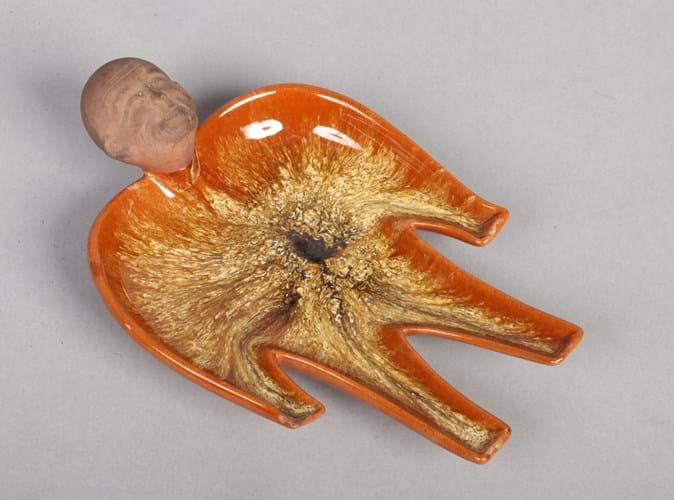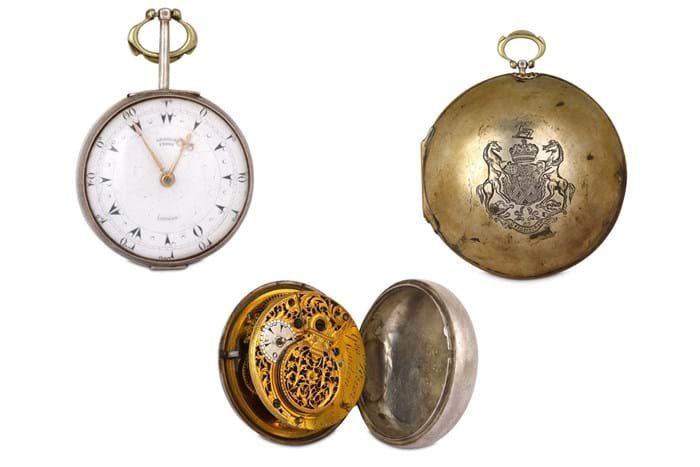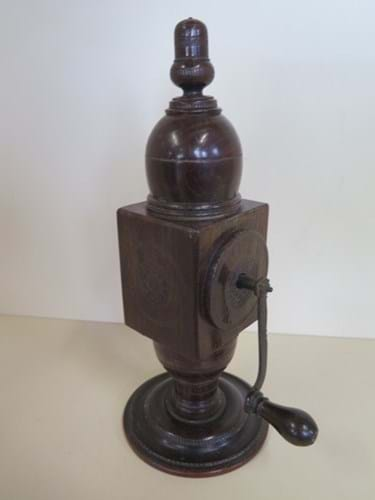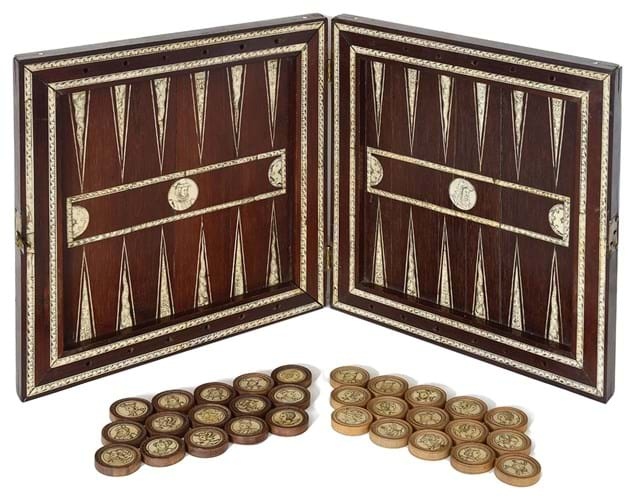1. Christopher Dresser dish – £4200
This Linthorpe pottery dish designed for the Middlesbrough pottery by Dr Christopher Dresser sold well over a £400-600 estimate for £4200 at Paul Beighton in Thurcroft, Rotherham on March 2. Impressed Linthorpe 293, the model copies an original Fijian libation dish in the collection at the British Museum.
This version (with a chip to an arm) is decorated with autumnal glazes with the figure’s head left unglazed.
The £4200 bid is one of a handful of strong prices recently paid examples of for the rarer Dresser Linthorpe creations. A record price of £17,000 was bid at Lyon & Turnbull in Edinburgh in October 2019 for a similar figural vessel – a sake bottle inspired by Fijian artworks.
Unlike his more formal creations for the Minton factory, Dresser enjoyed free rein when creating designs for something like 1000 pots while working as Art Superintendent at Linthorpe from 1879-82. He drew upon a wide range of influences including Minoan, Cycladic, pre-Columbian, Chinese and Japanese ceramics as well as locally-found prehistoric and Bronze Age artefacts.
While most of Dresser's designs were intended for mass production, some were made in very small numbers.
2. George Prior watch with Lord Byron crest – £10,000
English verge pocket watches such as this are traditionally associated with the flourishing export trade that existed with the Ottoman Empire around the turn of the 19th century. The black Turkish numerals and the silver and tortoiseshell piqué decoration are typical of those sold by a recognised coterie of London watch makers to affluent markets in the near East.
However, this example, made by George Prior with a cases hallmarked for Thomas & Richard Carpenter (1806) and James Richards (1809), offers the possibility of an altogether more exotic association. The brass travel case is engraved with the crest of George Gordon Byron, 6th Baron Byron (1788-1824) whose final days were spent fighting the Ottomans in the Greek War of Independence.
It came for sale at Chiswick Auctions in London on February 27 as part of a collection of Byron memorabilia offered by a European collector. The estimate of £2000-3000 was roughly the price a good Prior Ottoman market watch might bring without any association to a Romantic poet. It did rather better, selling at £10,000.
3. Georgian coffee grinder – £3800
When coffee was first introduced to England in the mid 17th century the beans were crushed by a pestle and mortar. In the Georgian period it paid to own a mechanical grinder such as this to quicken the laborious process.
Similar ‘bullet shaped’ mills made in the tropical hardwood lignum vitae are pictured in many different variations in the major books on treen: Edward Pinto’s Treen and Other Wooden Bygones (1979), Jonathan Levi’s Treen for the Table (1988) and Owen Evan-Thomas’ Domestic Utensils of Wood (1992). The various sections unscrew to allow for filling with coffee beans and the removal of the ground coffee.
This example, offered for sale at Willingham Auctions, Cambridge on February 29, is a little more decorative than most and stands 15in (36cm) on a pedestal foot. As an excellent example of a coveted type, it took £3800 (estimate £100-200), selling to a bidder using the saleroom.com.
4. Chinese export Jacobite plate – £20,000
Among the most recognisable of all the famille rose porcelain designs produced in China for export to Europe are the so-called ‘Scotsmen’ or ‘Highlander’ plates. The subjects are thought to be two members of the Black Watch regiment that took part in a short-lived mutiny in Flanders in March 1743.
Riflemen Shaw was among those shot at the Tower on July 18, 1743. Piper Macdonnel was sent to Georgia as a convict. The scene of these two Jacobite ‘martyrs' is taken from 1743 engravings by George Bickham.
Highlander plates feature in a number of major Chinese export and Jacobite themed collections. The example pictured here, with a chip to the foot and some wear to the enamel, came for sale at South Africa auctioneers Stephan Welz in Johannesburg on February 25-26 with a very appealing estimate of R25,000-35,000. In fact it made something closer to other examples from the series sold in recent years when it was hammered at R380,000 (£20,000).
5. German gaming board – £30,000
This late 16th century South German rosewood and bone gaming board came for sale at Catherine Southon via a valuation day in Tunbridge Wells. The vendor had little idea of its date or rarity but recalled finding it in a scrapheap in London’s East End in the 1970s.
Remarkably, it is a full set complete with its 30 counters or tablemen, each engraved with a portrait roundel of classical and biblical figures (one probably a later replacement). The board, inlaid for chess, backgammon and Nine Men's Morris, has similar rosettes (three now absent) that are probably based upon the work of the influential Nuremberg printmaker of Virgil Solis (1514-1620). It was probably made in Augsburg c.1590.
A similar games board without tablemen is in the collection of the Victoria and Albert Museum. The similarity of the corner roundels suggests a close relationship between the two boards and perhaps even the same workshop.
This board was given an estimate of £10,000-20,000 when offered for sale at the Farleigh Court Golf Club in Surrey on February 26. The hammer price of £30,000 came from an overseas bidder.










